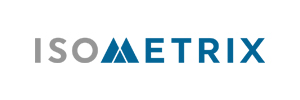According to a survey by EY, losing a license to operate now represents one of the biggest threats to mining and metals companies in 2019 - 2020.
Sadly, this comes as no surprise to Robin Bolton, Executive Head Sustainability at IsoMetrix, "The expectations and views of indigenous communities often differ to those of corporates. Without alignment, conflict can occur and companies risk losing their social license to operate."
Robin has 17 years' experience as an environmental and social consultant with a focus on the extractive industries across Africa and the Middle East. In this article, Robin discusses the differing expectations during each phase of a project, from both corporate and community perspectives, and concludes with recommendations on how to achieve alignment.
The evolving role of corporates in society
Over the past few decades, the role of corporate organizations in society has shifted. Consequently, more members or representatives of different impacted groups are claiming their right to be informed of, consulted on and enabled for decision-making.
Furthermore, in recent years, there have been advancements in the understanding of how stakeholders contribute to the creation of value. This has challenged corporates to refine their approach to engagement processes.
Types of social license
There are different definitions of social license to operate (SLO) which need to be understood in the context of your organization's activities and the locations you operate in.
In general, a SLO refers to the level of acceptance or approval by local communities and stakeholders of a company and their operation.
The value SLO enjoys today is indicative of the seismic shift social management has experienced over the past two decades. Social risks have frequently been considered one of the top ten business risks facing the mining and metals industry.
According to Ernst and Young's survey of 250 mining sector participants from around the world, "License to operate" is now considered the No. 1 business risk, with over half of respondents nominating it as such.
Stakeholder engagement and stakeholder management are two of the most crucial elements required for a successful project delivery, yet they are often regarded as a fringe activity.
Guiding principles of stakeholder engagement
The three main guiding principles of stakeholder engagement are widely considered to be:
- Engage with stakeholders to understand their expectations regarding opportunities and needs
- Be transparent, accounting to stakeholders on performance, promises and on the issues that matter to them.
- Develop innovative and sustainable responses to issues that matter now and in the future.
In addition to this, the Association of Project Management provides a list of ten general rules or principles of Stakeholder Engagement, summarized as:
- Communicate
- Consult early and often
- Remember, they are only human
- Plan it
- Relationships are key
- Simple, but not easy
- Just part of managing risk
- Compromise
- Understand what success is
- Take responsibility
Pre-Project Phase
Before a project begins, it is important to carry out prior planning and preparation, namely organizing appropriate security and project teams.
Necessary security: I have personally been involved in two situations that got hostile. One was in South Africa due to ongoing disagreements and conflict between two communities. The youth branch of one community took advantage of the engagement process and associated meetings to air their views. During another occasion in Tanzania, engagements upset illegal miners who became threatening. In addition to providing protection, the appropriate security team can help diffuse a potentially dangerous situation.
Also make sure, when assembling the team, correct representatives from the project owner are present. This ensures facts are correct, and that they are aware of any promises agreed to.
Exploration Phase
Each stage of a project requires its own approach and attention.
Initial contact and relationships are built during the exploration phase. Generally, exploration involves the processes of surveying, reconnaissance, drilling and sampling, and then closure of the exploration activities.
This stage also entails throughout engagements, especially during the authorization process. It is important to note that it needs to be in the correct language, according to legislation requirements, involve the right people and follow the correct forums.
In general, corporates realize the importance and scale of social risks, although there is still a way to go. Generally they:
- Consider meeting timelines as a priority, often to the neglect of due process of a project.
- Consider compliance to regulations as a main driver, to get their license to operate
- Often underestimate the importance of their own involvement in the process. They may outsource it to consultants.
In addition, corporates also expect that:
- The Impact Assessment (IA) or the Environmental, Social and Health Impact Assessment (ESHIA) will be conducted to the required standard.
- The IA will be done at a reasonable (i.e. low) cost and efficiently with little to no delay
- A positive Record of Decision or Authorization will be obtained to commence with project development.
Community makeup and their expectations differ significantly. In general, they will be focused on employment opportunities but often there are limited skills.
Again, it is important not to make assumptions but instead to engage early and listen to communities. I recall an engagement with Baka, an indigenous pygmy tribe inhabiting the southeastern rain forests of Cameroon. Their main concern was that their hunter-gatherer culture would not be disturbed.
The expectations of communities vary, from very little, to that which is unrealistic. The negative impact on quality of life is not often raised as a key concern or issue. It is important to mention that with an income there is not a loss of culture.
In general, due to the remote locations of projects and a community's lack of knowledge of projects and their consequences, they will expect that:
- Quality of life will improve
- Employment opportunities and quickly
- Income
- Education
- Health improvements.
Communities with some awareness or experience of projects raise the following points as concerns:
- Influx of people
- Unfulfilled promises
- Community degradation.
Project Phase
During a project, a corporation should:
- Engage as a minimum as per the obligations
- Ensure adequate and appropriately skilled resources are involved
- Matters arising are dealt with quickly and effectively
- Transparency in the whole process
- Set up mechanisms for communication (such as scheduling meetings and ad hoc engagements) and raising grievances and concerns.
The expectations of a corporation during this project phase is that, in general, community requirements and needs will change, but that this change will not be significant. Also, that systems and mechanisms set up for communication and grievances will be enough and adhered to. They also expect that false expectations may arise and that there may be some social unrest, related to the project and certain deliverables, but nothing significant.
However, there is sometimes a different reality which highlights the unpredictable nature of the social risks. Strikes and stoppages may occur. Reputational damage can happen. Radicals or activists seek to gain something from raising false accusations or issues.
Community expectations during this project phase are generally that the promises will be honored, and that the project will solve many of their needs and concerns.
Sometimes the communities have very little idea of what to expect during the life of a project. It is important to note that ongoing conversations are required between the community, corporates and project owners. Throughout this phase, reputational damage can occur so again it is important that corporates and project owners deliver and live up to promises made.
Post Project Phase
The post-project phase generally includes decommissioning process, leading up to and including closure, (closure plans with sustainable outcomes). It is important to remember that the company is still liable for unhealthy and unsafe conditions and to reduce any legacy that remains from their operation.
A corporation will want to close as quickly as possible, at the lowest cost and liability. A legacy may, however, remain for decades.
The corporate expectations during this phase are that closure will occur. It may give rise to some social issues but nothing substantial. Corporates do not always understand closure process requirements; the phases, timing, and costs to reach final closure.
The community, on the other hand, do not expect that the site closure will affect them in any way. They expect that site closure will be done in a safe and responsible way, that does not affect health and is not polluting. They expect that commitments made during this phase will be honored. In general, communities expect that there will be sustainable outcomes and life following the closure of a mine. Often, however, they do not realize that certain support and services will no longer be available.
Recommendations
To conclude, there are four main recommendations and key outcomes applicable throughout the whole process.
- Continual engagements are important, and with the monitoring of key indicators.
- It's advisable to set up an early warning system, to aid in the detection of possible disruptions, thereby allowing early intervention so they can be dealt with.
- There needs to be an unambiguous and consistent message from the project proponent (project owners and corporates) that is communicated by all resources.
- Systems set up to communicate between the corporates and communities should be adhered to.
By better understanding the differences in corporate and community expectations; following the right processes and using the right tools, stakeholder engagement can be transformed from an organizational risk to value generation.
About the author
Robin Bolton has been in the environmental, social and sustainability field since 2000 as a consultant focusing on the mining, oil and gas and infrastructure sectors as well as with financial institutes.
His key experience is in integrated management systems, water efficiencies, environmental authorizations, environmental monitoring, ESG, auditing and feasibility studies, international lending requirements, mine closure, environmental and social risks, and the environmental and social license to operate.
Robin Bolton is now the Executive Head Sustainability at IsoMetrix, an EHS centric integrated risk management software provider.
Find out more about our Social License to Operate Software Solution
ABOUT THIS COMPANY
IsoMetrix
IsoMetrix is a leading supplier of integrated software for governance, risk, and compliance.
HEAD OFFICE:
- Johannesburg, South Africa, Block 7, Fourways Office Park, Roos Street, Fourways, 2191
- Phone: +27 11 465 6944
- Web: www.isometrix.com
- Email: info@isometrix.com


























